Wang Gongxin at White Cube: hidden cameras, eerie minimalism and grey matter
Wang Gongxin’s show at White Cube Mason’s Yard explores cultural polarities and in-between states through 13 captivating new multimedia works
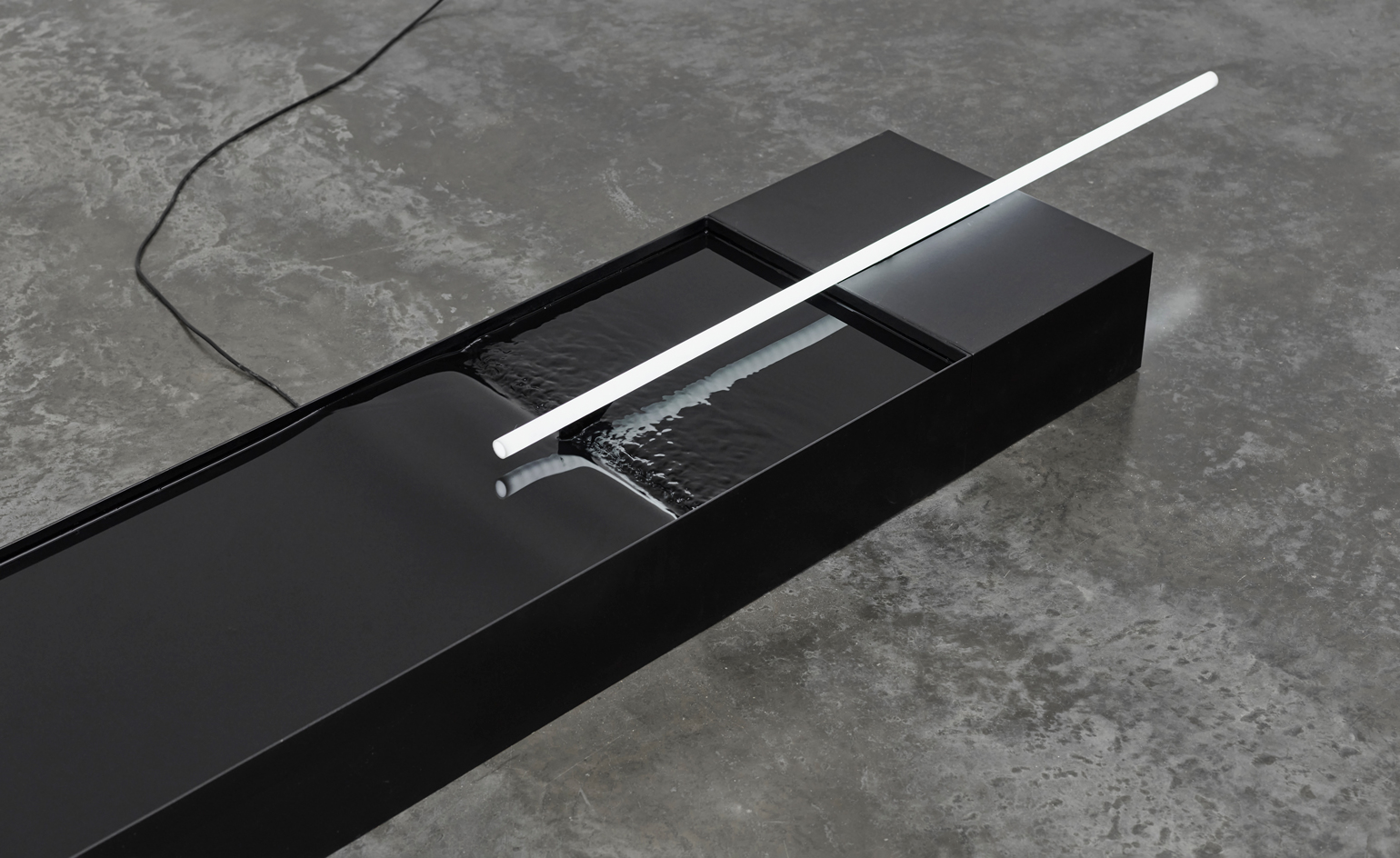
Your body appears on a series of screens lining the walls. You’re in motion, grainy, and caught on camera from several angles. But what camera?
In the centre of the space, two glowing, 3D-printed light bulbs swing from the ceiling like pendulums or a deconstructed Newton’s cradle. They skim pools of water, one dyed black, the other white. During the exhibition run, splashes from the bulbs will create a small exchange of liquid between pools, meaning that neither will remain black nor white.
We still don’t know where the camera is hidden, but we do know that this is Swinging Gray (2021) a kinetic video installation by Chinese artist Wang Gongxin as part of ‘In Between’ at White Cube Mason’s Yard, London.
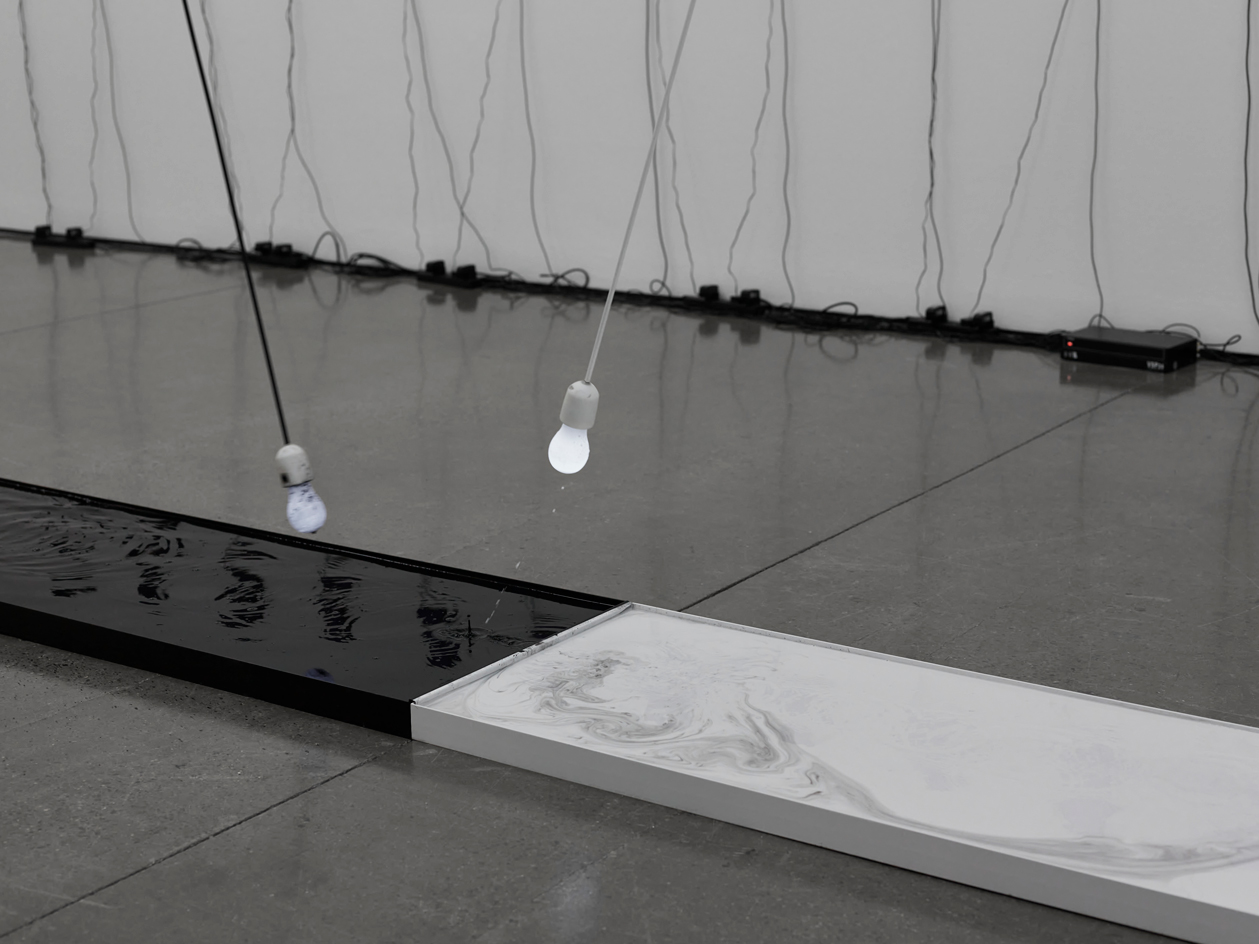

Top and above: Wang Gongxin, Swinging Gray 2021 TV monitor, metal container, light bulb, motor, ink with water, audio video splitter and cameras.
It’s a show that examines dualities: East and West, artificial and natural, individual and collective, spectator and spectated, and crucially, the often intangible space in the middle of these poles.
As a student, the Beijing-born artist trained in the modelling techniques of the Soviet School and used Socialist Realist techniques to imitate the Neo-Realist styles of the West. He was also inspired by 1960s minimalist sculpture and Japanese architect Kurokawa Kisho’s concept of ‘grey space’. In his London art exhibition, he expands on the core thesis of Japanese writer Tanizaki Junichiro’s 1933 essay In Praise of Shadows. In this influential text, the author argued that light is used differently in the East and West: Western cultures seek illumination and clarity; East Asian cultures embrace shadow and subtlety.
Wang has long probed the contrasts between his native China and the United States, and the dazzling, sometimes stifling complexity of living in a globalising world. Pieces such as Readable Scenery (2019) combine traditional Chinese landscape painting and Western conceptual art.
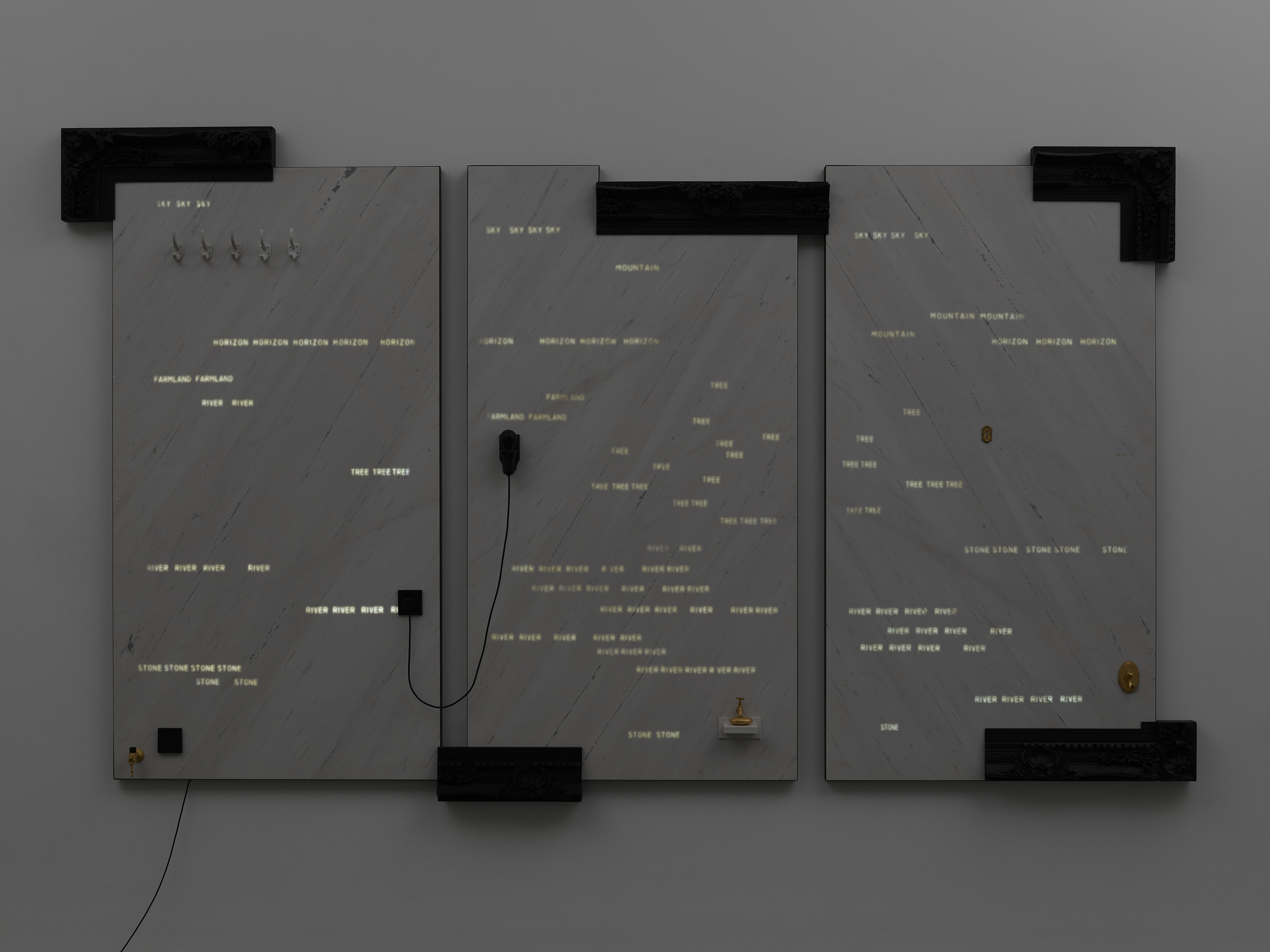
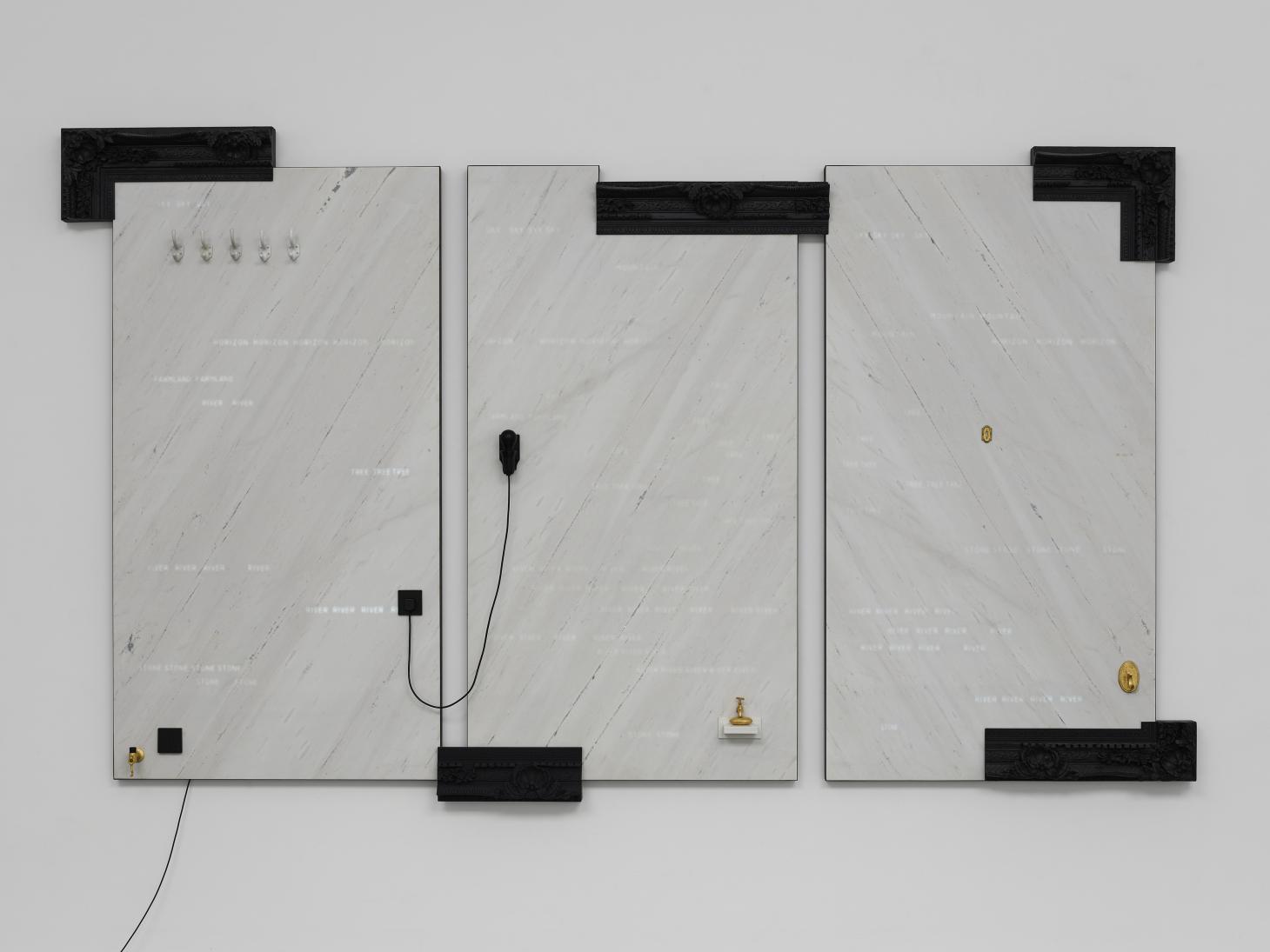
Top and above: Wang Gongxin, Readable Scenery 2019, Wood, marble, copper, LED light and light controller.
‘After arriving in New York, as I hesitated to give up the two-dimensional plane, I experimented with partial abstraction, abstraction and minimalism, before eventually experimenting in three-dimensional installations of various materials,’ says Wang. ‘If there is gradual enlightenment here, could it perhaps be found in this gradual progression of my practice? If you ask what motivation or drive was behind it, I think that the work of the artist is driven by an obsession with creativity and pursuit of a complete spiritual world.’
Receive our daily digest of inspiration, escapism and design stories from around the world direct to your inbox.
Three wall-mounted marble panels bear words associated with landscapes, including ‘horizon’, ‘river’, and ‘farmland’. These are carved into the backs of the slabs, readable only when lit from behind. Attached to the marble are 3D-printed objects: ornate picture frames, more light bulbs and electrical cords and a bar of soap. There is also a row of real coat hangers located in the upper left-hand corner of a panel, a nod to Trap, Marcel Duchamp’s 1917 readymade which repurposes the same type of hanger.
Wang’s work, often black and white, but never straightforward, composes a dynamic interchange between the work’s movement and that of its viewer. When people are involved, tightly controlled elements are at risk of unexpected outcomes. The spectator sees the work, and is the work, as humanity sees the conundrum, and is the conundrum.

Wang Gongxin ’In-Between’, White Cube Mason’s Yard until 26 February 2022
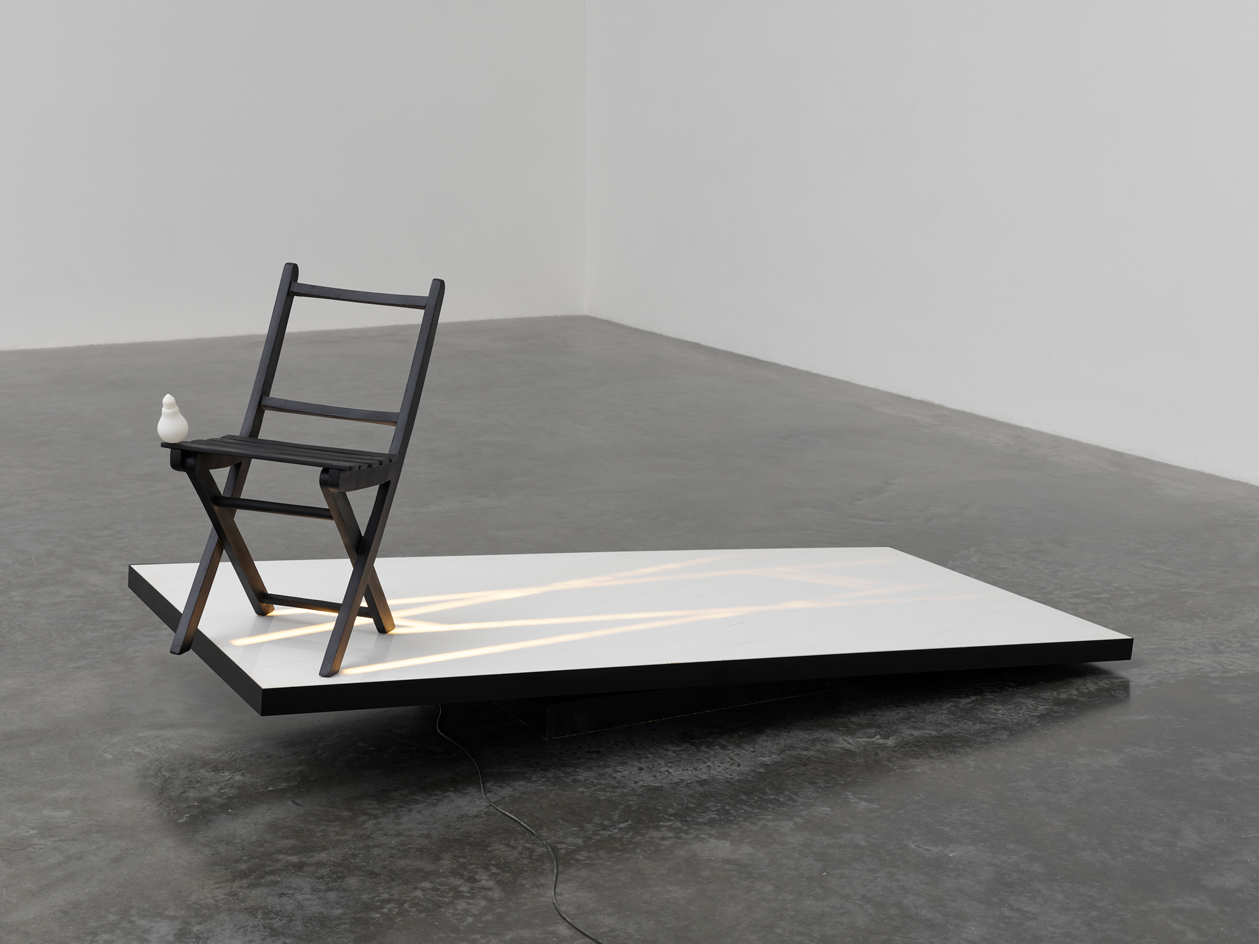
Wang Gongxin, Shadow of Light 2020 Wooden chairs, marble, 3D-printed light bulb, LED light and LED controller.
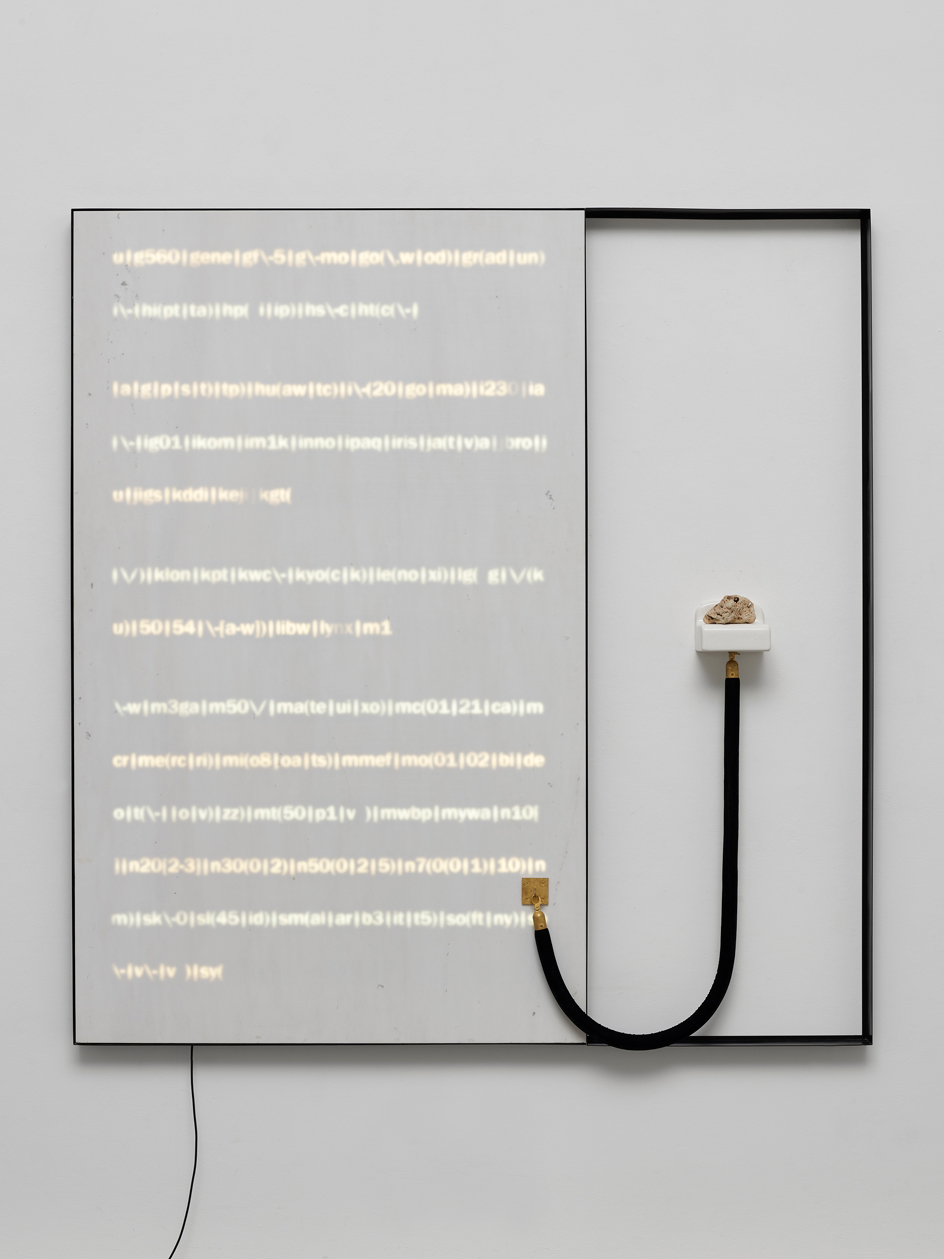
Wang Gongxin, Wall Behind the Mountain, 2019, Marble, stone, LED lights, light controller and rope.
INFORMATION
Wang Gongxin: I’n-Between’ White Cube Mason’s Yard, until 26 February 2022. whitecube.com
Harriet Lloyd-Smith was the Arts Editor of Wallpaper*, responsible for the art pages across digital and print, including profiles, exhibition reviews, and contemporary art collaborations. She started at Wallpaper* in 2017 and has written for leading contemporary art publications, auction houses and arts charities, and lectured on review writing and art journalism. When she’s not writing about art, she’s making her own.
-
 How We Host: Interior designer Heide Hendricks shows us how to throw the ultimate farmhouse fête
How We Host: Interior designer Heide Hendricks shows us how to throw the ultimate farmhouse fêteThe designer, one half of the American design firm Hendricks Churchill, delves into the art of entertaining – from pasta to playlists
-
 Arbour House is a north London home that lies low but punches high
Arbour House is a north London home that lies low but punches highArbour House by Andrei Saltykov is a low-lying Crouch End home with a striking roof structure that sets it apart
-
 25 of the best beauty launches of 2025, from transformative skincare to offbeat scents
25 of the best beauty launches of 2025, from transformative skincare to offbeat scentsWallpaper* beauty editor Mary Cleary selects her beauty highlights of the year, spanning skincare, fragrance, hair and body care, make-up and wellness
-
 Out of office: The Wallpaper* editors’ picks of the week
Out of office: The Wallpaper* editors’ picks of the weekFar from slowing down for the festive season, the Wallpaper* team is in full swing, hopping from events to openings this week. Sometimes work can feel like play – and we also had time for some festive cocktails and cinematic releases
-
 The Barbican is undergoing a huge revamp. Here’s what we know
The Barbican is undergoing a huge revamp. Here’s what we knowThe Barbican Centre is set to close in June 2028 for a year as part of a huge restoration plan to future-proof the brutalist Grade II-listed site
-
 Out of office: The Wallpaper* editors’ picks of the week
Out of office: The Wallpaper* editors’ picks of the weekIt’s wet, windy and wintry and, this week, the Wallpaper* team craved moments of escape. We found it in memories of the Mediterranean, flavours of Mexico, and immersions in the worlds of music and art
-
 Each mundane object tells a story at Pace’s tribute to the everyday
Each mundane object tells a story at Pace’s tribute to the everydayIn a group exhibition, ‘Monument to the Unimportant’, artists give the seemingly insignificant – from discarded clothes to weeds in cracks – a longer look
-
 Out of office: The Wallpaper* editors’ picks of the week
Out of office: The Wallpaper* editors’ picks of the weekThis week, the Wallpaper* team had its finger on the pulse of architecture, interiors and fashion – while also scooping the latest on the Radiohead reunion and London’s buzziest pizza
-
 Out of office: The Wallpaper* editors’ picks of the week
Out of office: The Wallpaper* editors’ picks of the weekIt’s been a week of escapism: daydreams of Ghana sparked by lively local projects, glimpses of Tokyo on nostalgic film rolls, and a charming foray into the heart of Christmas as the festive season kicks off in earnest
-
 Wes Anderson at the Design Museum celebrates an obsessive attention to detail
Wes Anderson at the Design Museum celebrates an obsessive attention to detail‘Wes Anderson: The Archives’ pays tribute to the American film director’s career – expect props and puppets aplenty in this comprehensive London retrospective
-
 Meet Eva Helene Pade, the emerging artist redefining figurative painting
Meet Eva Helene Pade, the emerging artist redefining figurative paintingPade’s dreamlike figures in a crowd are currently on show at Thaddaeus Ropac London; she tells us about her need ‘to capture movements especially’